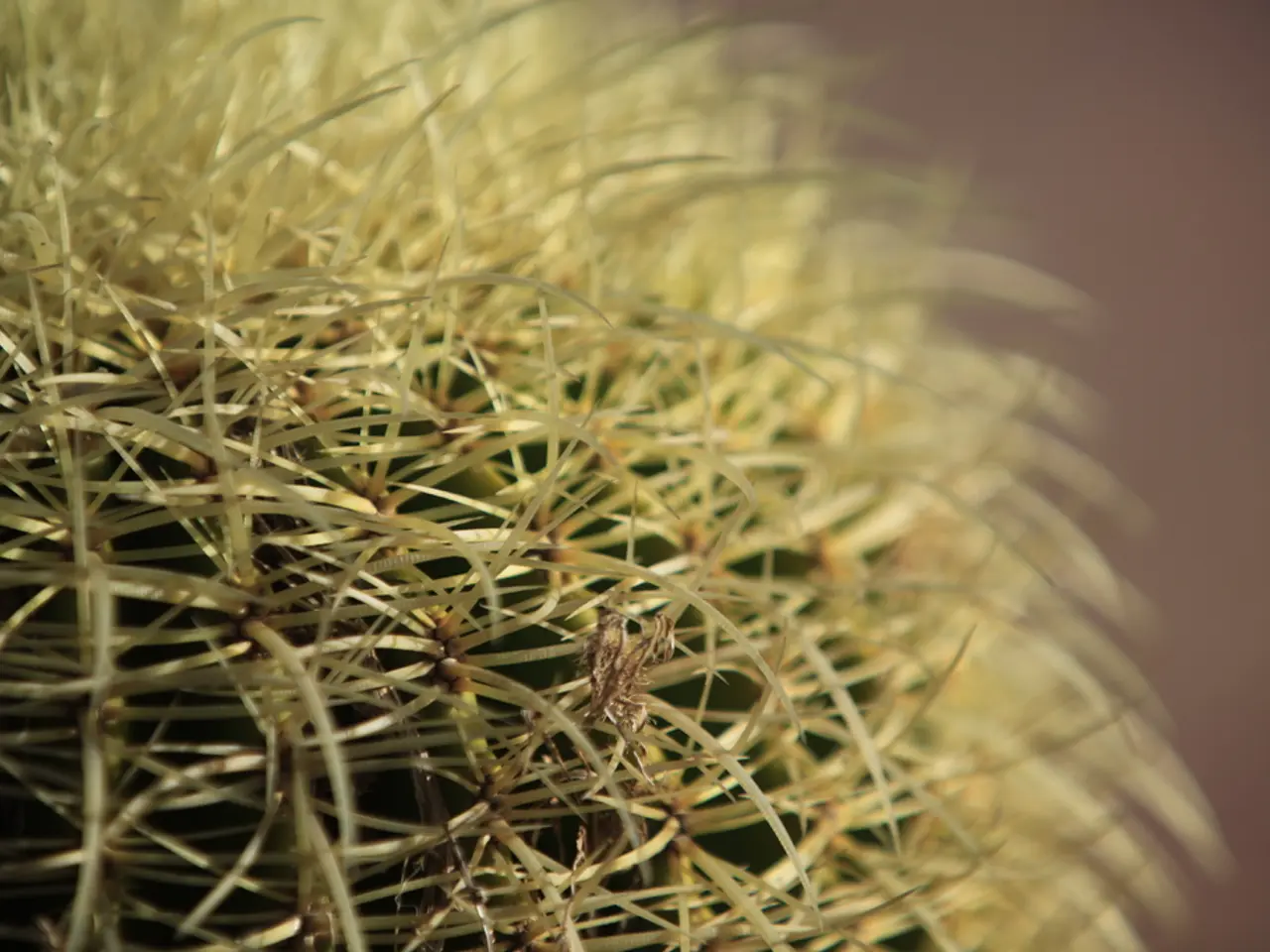Comprehensive Information on Fishbone Cactus: Cultivation and Nurturing Techniques
Caring for Your Fishbone Cactus: A Comprehensive Guide
The fishbone cactus, scientifically known as Cryptocereus anguliger, is a popular and unique-looking plant that thrives in the right conditions. Here's a guide on how to care for your fishbone cactus to ensure it stays healthy and blooms beautifully.
Lighting
The fishbone cactus prefers bright, indirect light. It thrives in well-lit spots but should be protected from direct sunlight, which can cause damage. A bright, indirect location is ideal for this plant.
Temperature and Humidity
The fishbone cactus originates from tropical forests, so it prefers a warm environment that mimics these conditions. A dry, sunny spot is recommended, but avoid full shade or intense direct sun. The plant also responds well to occasional misting and higher humidity levels, especially during the growing season.
Watering
Water sparingly and let the top layer of soil dry out between waterings, especially in cooler months. Overwatering can lead to root rot, so it's essential to maintain the right balance.
Repotting
Most plants need to be repotted every 1-3 years. As the nutrients in the medium are used up and the bark begins to decay, repot the fishbone cactus into fresh medium. Repotting the plant and giving the roots more room will also encourage blooming. It's best to repot the plant after it has bloomed and every 3 years.
Propagation
Propagation by seed can be difficult and time-consuming. A better method is vegetative. To propagate your fishbone cactus, gently tease the roots to help them spread if the plant is pot-bound and backfill with growing medium. Remove the overgrown stems, allow them to callus for a few days, then pot them up in the same growing medium in which the original plant was housed.
Feeding
To encourage blooming, feed the plant with a high potassium food for a few months. Monthly feeding during the growing season can support healthy growth and flowering.
Pruning
The fishbone cactus doesn't need pruning, but it may be required if the stems get out of hand. Remove any dead stems from the point they begin to discolor using clean, sharp pruners.
Special Considerations
The fishbone cactus makes an ideal hanging plant. Select a container that is just large enough to contain the plant. If the plant is grown outdoors in warmer climes, bring it indoors for the winter if frost is expected. Temperatures below 45 degrees Fahrenheit (7 C) can damage or kill the plant. If a freeze is expected, drape the plant in frost protection fabric. Remove the fabric when the temperatures warm.
Other Fishbone Cacti
Other plants in different genera are also called fishbone cactus, such as Selenicereus anthonyanus, Disocactus anguliger, and Weberocereus imitans. However, they have different attributes and are not the same plant as Cryptocereus anguliger. The fishbone cactus, specifically Epiphyllum anguliger, is the most common ric rac cactus available.
By following these care guidelines, you can ensure that your fishbone cactus stays healthy and blooms beautifully. Happy gardening!
Read also:
- Summer Fruit Stars of 2025: Blueberries, Tomatoes, and Cherries Lead the Charge
- A renowned culinary artist opted to dine at this establishment:
- Expanding Plant-Based Protein Market Projected to Reach US$30.8 Billion by 2034, Exhibiting a Compound Annual Growth Rate (CAGR) of 7.1%
- Revisiting the Future: An Application Evoking the NSU Complex in Chemnitz




